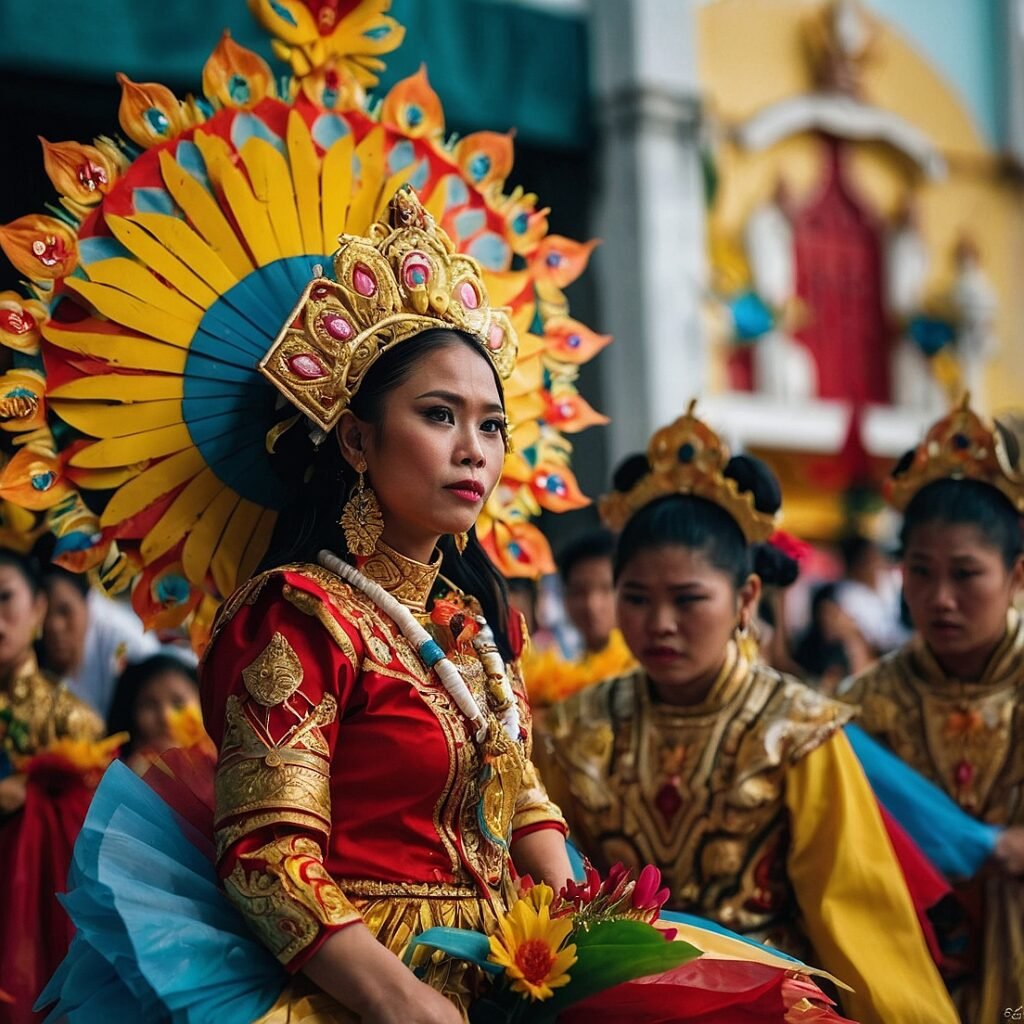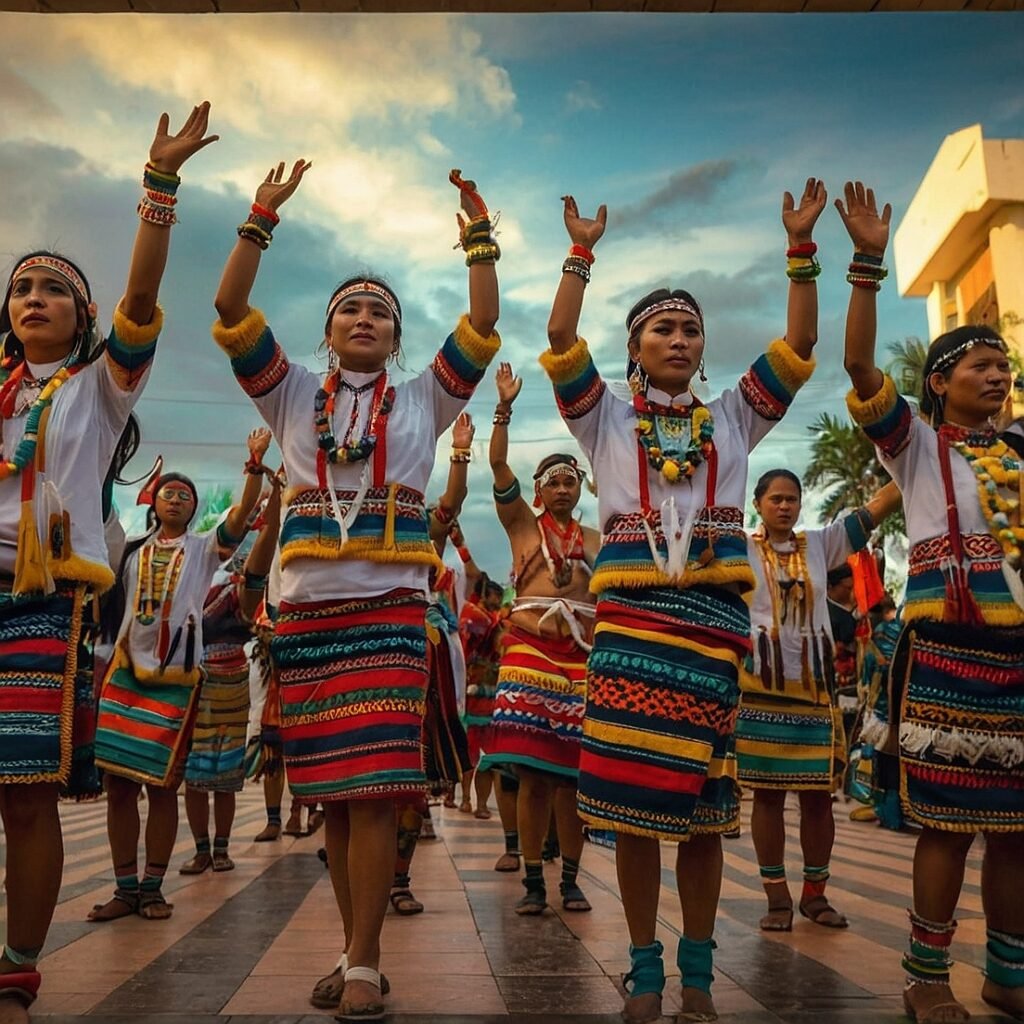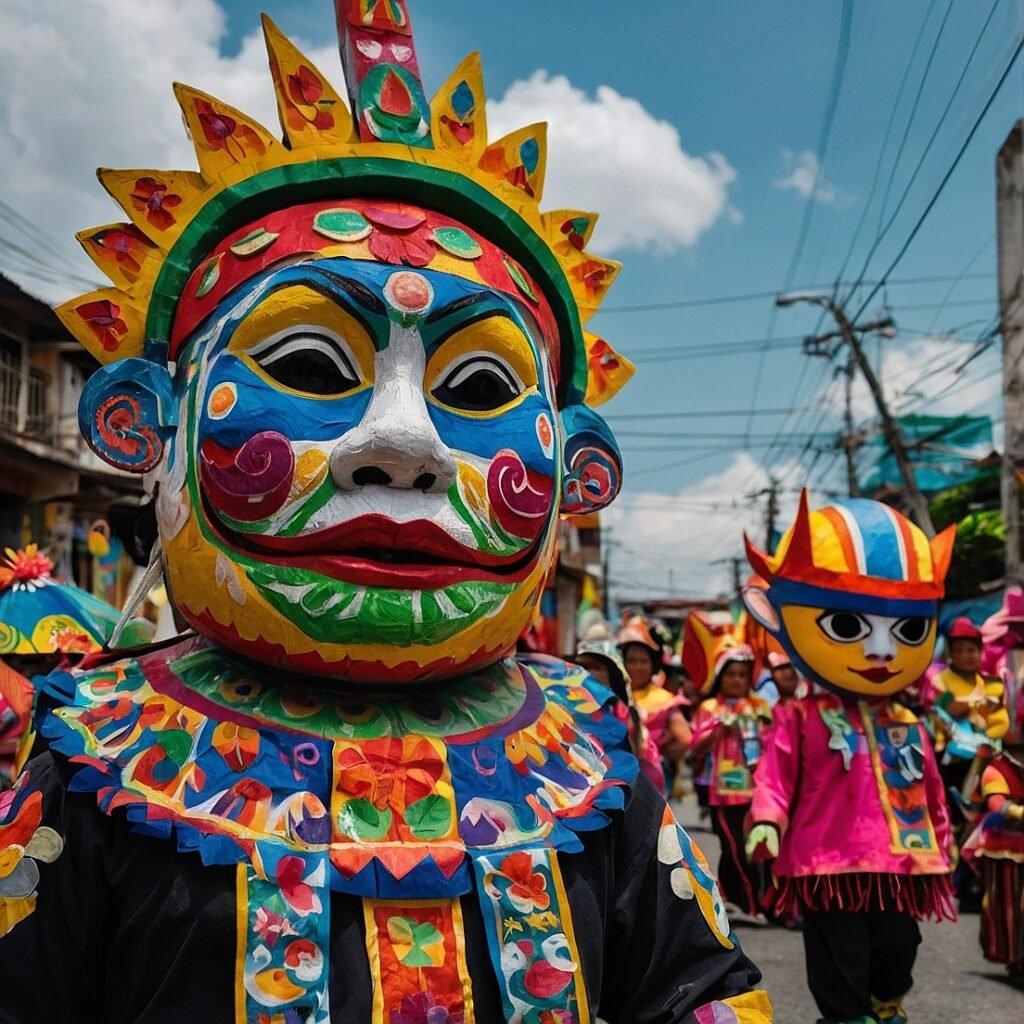Have you ever wondered what it’s like to be part of a festival that’s been celebrated for centuries? A celebration that brings together history, faith, and culture in a vibrant display of colors, music, and dance? Well, let me introduce you to Sinulog – Cebu’s grand festival that honors the Santo Niño (Holy Child Jesus). This isn’t just any ordinary festival; it’s a spectacle that captures the very essence of Cebuano culture and spirituality. Imagine streets filled with dancers moving to the rhythm of drums, colorful costumes swirling in a sea of devotees, and an atmosphere electric with joy and reverence. That’s Sinulog for you! In this blog, we’ll dive deep into the heart of this incredible celebration, exploring its rich history, vibrant traditions, and the impact it has on both locals and visitors alike. So, grab a seat, and let’s embark on this exciting journey through one of the Philippines’ most beloved festivals!
The Origins: A Dance of Faith and History
The Legend of the Santo Niño
Every great festival has a story, and Sinulog’s tale is one that stretches back centuries. It all began in 1521 when Ferdinand Magellan arrived in Cebu, bringing with him a statue of the Santo Niño as a baptismal gift to Rajah Humabon and Queen Juana. This statue wasn’t just any religious artifact; it became a symbol of the Christianization of the Philippines. But here’s where it gets interesting – the statue mysteriously survived a fire that razed Cebu in 1565, and was found unscathed by Juan Camus, a soldier of Miguel Lopez de Legazpi. Talk about a miracle, right? This event cemented the Santo Niño’s place in Cebuano hearts, marking the beginning of a devotion that would last for centuries.
The Birth of Sinulog
Now, you might be wondering, “Where does the name ‘Sinulog’ come from?” Well, it’s actually derived from the Cebuano word “sulog,” which means “like water current movement.” This refers to the forward-backward movement of the Sinulog dance, which is said to resemble the gentle back-and-forth motion of water. The dance itself is believed to have pre-colonial origins, originally a ritual performed to honor pagan idols. But with the arrival of Christianity, it evolved into a dance of devotion to the Santo Niño. Isn’t it fascinating how traditions adapt and transform over time?
The Festival Today: A Kaleidoscope of Colors and Traditions
The Grand Parade: A Spectacle Like No Other
Fast forward to today, and Sinulog has grown into one of the grandest festivals in the Philippines. The highlight? The Grand Parade, of course! Picture this: streets lined with thousands of spectators, all eager to catch a glimpse of the elaborate floats, masked dancers, and street performers. The air is filled with the sound of drums and trumpets, creating a rhythm that seems to make the whole city pulse with energy. Dancers dressed in vibrant costumes perform the traditional Sinulog dance, moving two steps forward and one step back to the beat of the drums. It’s a sight that truly has to be seen to be believed!
The Fluvial Procession: A River of Faith
But the Grand Parade is just one part of the festivities. Another key event is the Fluvial Procession, where a statue of the Santo Niño is carried on a beautifully decorated ship along the Mactan Channel. Hundreds of smaller boats follow, creating a river procession that’s both solemn and spectacular. It’s a beautiful symbol of how faith flows through the heart of Cebuano culture, don’t you think?
Novena Masses: Nine Days of Devotion
For the devout, the Sinulog festival actually begins nine days before the grand parade with the start of the Novena Masses. These daily masses at the Basilica Minore del Santo Niño are a time for prayer and reflection, with thousands of devotees participating each day. It’s a reminder that at its core, Sinulog is a celebration of faith and devotion.
The Cultural Impact: More Than Just a Festival
Boosting Local Economy
Sinulog isn’t just a spiritual and cultural event; it’s also a major economic boost for Cebu. The festival attracts millions of visitors each year, both local and international. This influx of tourists means big business for hotels, restaurants, and local vendors. In fact, let’s look at some numbers:
| Year | Estimated Attendance | Estimated Economic Impact |
|---|---|---|
| 2018 | 1.4 million | ₱2.2 billion |
| 2019 | 3.5 million | ₱3.1 billion |
| 2020 | 3.2 million | ₱3.2 billion |
These figures show just how significant Sinulog is for Cebu’s economy. It’s not just a celebration; it’s a lifeline for many local businesses.
Preserving Cebuano Heritage
Beyond the economic impact, Sinulog plays a crucial role in preserving and promoting Cebuano culture. The festival is a living museum of sorts, showcasing traditional dances, music, and crafts. It’s a way for younger generations to connect with their roots and for visitors to get a taste of authentic Cebuano culture. From the intricately designed costumes to the rhythmic beats of the drums, every aspect of Sinulog tells a story of Cebu’s rich heritage.
Fostering Community Spirit
One of the most beautiful aspects of Sinulog is how it brings people together. For weeks leading up to the festival, you’ll see communities coming together to prepare – designing costumes, practicing dance routines, and decorating their neighborhoods. It’s a time when the spirit of “bayanihan” (communal unity) is in full display. This sense of community extends to the festival itself, where locals open their homes to visitors, sharing not just their space but also their traditions and hospitality.
Experiencing Sinulog: A Visitor’s Guide
When to Go
If you’re planning to experience Sinulog for yourself (and trust me, you should!), timing is everything. The festival culminates on the third Sunday of January each year, but the celebrations actually span an entire week. Arriving a few days early gives you a chance to soak in the pre-festival atmosphere and participate in events like the opening parade and cultural shows.
What to Expect
Prepare for sensory overload – in the best way possible! The streets are a riot of color, with dancers in elaborate costumes, vendors selling everything from local delicacies to Sinulog merchandise, and the constant beat of drums in the background. It’s crowded, it’s loud, and it’s absolutely exhilarating. But it’s not just about the grand events; some of the best experiences come from wandering the side streets, where you might stumble upon impromptu dance performances or local food stalls serving up Cebuano specialties.
Tips for First-Timers
- Wear comfortable shoes – you’ll be doing a lot of walking.
- Stay hydrated – Cebu can get hot, especially in a crowd.
- Bring a camera – you’ll want to capture every moment.
- Be respectful – remember, this is a religious festival at its core.
- Try the local food – festivals are the perfect time to sample Cebuano cuisine.
The Evolution of Sinulog: Tradition Meets Modernity
Incorporating Technology
In recent years, Sinulog has embraced technology to enhance the festival experience. From LED-lit floats to social media campaigns that engage a global audience, the festival organizers have found ways to blend tradition with modern elements. This evolution ensures that Sinulog remains relevant and exciting for younger generations while still honoring its roots.
Environmental Concerns and Solutions
With the massive crowds come environmental challenges. In response, recent years have seen a push towards a more eco-friendly Sinulog. Initiatives like banning single-use plastics during the parade and promoting proper waste disposal have been implemented. It’s heartening to see a centuries-old tradition adapting to address contemporary concerns, isn’t it?
The Global Stage: Sinulog’s International Appeal
Drawing International Attention
Sinulog isn’t just a local or even national event anymore – it’s gained international recognition. Travel bloggers, cultural enthusiasts, and curious tourists from around the world make the journey to Cebu to experience this unique festival. It’s become a bucket-list item for many, alongside other famous global festivals.
Cultural Exchange
One of the beautiful aspects of Sinulog’s growing international appeal is the cultural exchange it fosters. Visitors get to immerse themselves in Cebuano culture, while locals have the opportunity to interact with people from diverse backgrounds. This exchange of ideas and experiences adds another layer of richness to the festival.
The Heart of Sinulog: Personal Stories and Experiences
Devotees’ Testimonials
At its core, Sinulog is about faith and devotion. Many participants have personal stories of miracles or answered prayers attributed to the Santo Niño. These testimonials are often shared during the festival, adding a deeply personal and emotional dimension to the celebrations. It’s these stories that truly bring home the significance of Sinulog to the Cebuano people.
Volunteers and Organizers
Behind the scenes, an army of volunteers and organizers work tirelessly to make Sinulog happen. From choreographers training dancers for months to security personnel ensuring everyone’s safety, these unsung heroes are the backbone of the festival. Their dedication and passion are what keep the spirit of Sinulog alive year after year.
Looking to the Future: Sinulog’s Continuing Legacy
Passing the Torch
As with any long-standing tradition, there’s always the question of how to keep it relevant for future generations. Sinulog organizers have been proactive in involving youth in various aspects of the festival – from dance competitions to social media campaigns. This engagement ensures that the younger generation not only participates in but also takes ownership of their cultural heritage.
Balancing Growth and Tradition
As Sinulog continues to grow in popularity, there’s a delicate balance to maintain between accommodating more visitors and preserving the festival’s authenticity. It’s a challenge that requires careful planning and constant dialogue between organizers, local government, and the community. The goal is to allow Sinulog to evolve while staying true to its core as a celebration of faith and culture.
The Enduring Spirit of Sinulog
As we wrap up our journey through the vibrant world of Sinulog, it’s clear that this festival is so much more than just a yearly event. It’s a living, breathing embodiment of Cebuano culture, faith, and community spirit. From its humble beginnings as a local religious celebration to its current status as an internationally recognized festival, Sinulog has come a long way. Yet, at its heart, it remains true to its roots – a heartfelt expression of devotion to the Santo Niño.
Whether you’re a devout pilgrim, a culture enthusiast, or simply someone looking for an unforgettable experience, Sinulog has something to offer. It’s a festival that engages all your senses, challenges your perceptions, and leaves you with memories that last a lifetime. The rhythmic chant of “Pit Senyor!” (a plea to the Santo Niño) echoing through the streets, the kaleidoscope of colors in the parade, the warmth of Cebuano hospitality – these are the things that make Sinulog truly special.
As we look to the future, there’s no doubt that Sinulog will continue to evolve, adapting to new challenges and embracing new technologies. But one thing is certain – the spirit of Sinulog, that unique blend of faith, culture, and celebration, will endure. It will continue to be a beacon of Cebuano identity, a testament to the power of tradition, and a joyous celebration that brings people together from all walks of life.
So, whether you’re planning your first visit to Sinulog or you’re a long-time devotee, remember that you’re not just attending a festival – you’re becoming part of a centuries-old tradition. You’re joining millions of others in a celebration of faith, culture, and community. And who knows? Maybe next year, we’ll see you dancing in the streets of Cebu, moving to the rhythm of the Sinulog beat!
Disclaimer: This blog post is based on information available up to 2020. While we strive for accuracy, some details may have changed since then. We encourage readers to verify current information and report any inaccuracies so we can correct them promptly.




